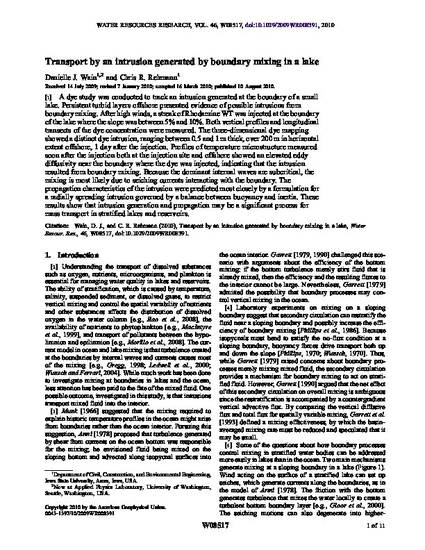
A dye study was conducted to track an intrusion generated at the boundary of a small lake. Persistent turbid layers offshore presented evidence of possible intrusions from boundary mixing. After high winds, a streak of Rhodamine WT was injected at the boundary of the lake where the slope was between 5% and 10%. Both vertical profiles and longitudinal transects of the dye concentration were measured. The three-dimensional dye mapping showed a distinct dye intrusion, ranging between 0.5 and 1 m thick, over 200 m in horizontal extent offshore, 1 day after the injection. Profiles of temperature microstructure measured soon after the injection both at the injection site and offshore showed an elevated eddy diffusivity near the boundary where the dye was injected, indicating that the intrusion resulted from boundary mixing. Because the dominant internal waves are subcritical, the mixing is most likely due to seiching currents interacting with the boundary. The propagation characteristics of the intrusion were predicted most closely by a formulation for a radially spreading intrusion governed by a balance between buoyancy and inertia. These results show that intrusion generation and propagation may be a significant process for mass transport in stratified lakes and reservoirs.
Available at: http://works.bepress.com/chris_rehmann/16/

This article is from Water Resources Research 46 (2010): W08517, doi:10.1029/2009WR008391. Posted with permission.